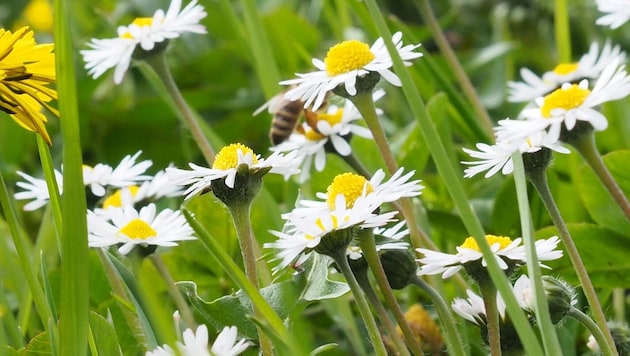The splendor of native flowers
Brought to life by the spring sun
The appearance of the first flowers is a fascinating natural spectacle every year. The "Krone Vorarlberg" presents the most important local early starters:
The first two harbingers of spring have already appeared in Vorarlberg this year in February: snowdrops from the amaryllis family and crocuses, which belong to the iris family, are the first flowers in the annual cycle in many places. By the end of March, their short flowering period is already over. Then a wide variety of other wildflowers take over in gardens, meadows and forest edges.
Many early bloomers are so-called spring geophytes with an often short vegetation period. They can cope with unfavorable conditions such as cold, wet and snow and survive after flowering with underground organs (bulbs, tubers or rhizomes). These store nutrients and energy that enable the plants to grow quickly at low temperatures.
For most early bloomers, the increased sunlight reaching the ground through leafless trees and bushes is the starting signal for their above-ground phase of life. They only grow and bloom for a few weeks a year until they literally retreat again to recharge their batteries in the soil. For people, however, the first flowers of the year are a sign of the reawakening of life. Plants such as the yellow daffodil, also known as the daffodil because of the time of its bloom, have great cultural symbolism and some flowers have been part of religious ceremonies since ancient times.
Basis of life for a number of animal species
The first flowers are also eagerly awaited by fauna - as soon as they open, they are occupied by bees, butterflies and other insects.
A typical species that loves the cool weather and is now in full bloom in spring is the primrose, whose vibrant flower colors are reminiscent of colorful Easter eggs. There are around 500 different species of primrose in total - and almost all of them are found in the northern hemisphere. The color palette of primrose flowers ranges from lavender, magenta, pink and purple to yellow and white.
The primrose, whose name is derived from the similarity of the inflorescence to a bunch of keys, also belongs to this plant family. It can currently be found in semi-natural meadows, in sparse deciduous forests or on forest edges and climbs to an altitude of up to 1700 meters.
Rich colors and fragrant sc ent
The March violet, also known as the fragrant violet due to its flowery scent, joins the ranks of the early bloomers. This dainty violet-blue flower also thrives on the edges of woods, in shady groves or under bushes. The plant has been cultivated since ancient times and was used in religious rituals as well as in medicine. The March violet spreads by runners so that it can gradually colonize large areas - provided it remains undisturbed.
Similar in color to the violet is the liverwort, which thrives on nutrient-rich forest soils between March and April and is therefore considered a characteristic species of deciduous forests in Central Europe. The species belongs to the large buttercup family and, like most members of this plant family, is slightly poisonous due to the substance protoanemonin. However, the plant is an important source of pollen for insects.
No spring without daisies
The common daisy, also known as the daisy or lady's flower, also joins the spring flowering season, although its flowering period often extends into the fall. As it grows in almost every meadow, the daisy is one of the best-known plant species in Europe. In the 13th century, the little flower achieved unimagined fame when it was included in the coat of arms of the French King Louis IX along with the lily.
Due to their life cycle, people have always associated early bloomers as symbols of resilience, vitality and renewal. In the coming weeks, their peak bloom will come to an end and they will barely noticeably retreat again - underground, however, they are already working towards the next spring.
















Kommentare
Da dieser Artikel älter als 18 Monate ist, ist zum jetzigen Zeitpunkt kein Kommentieren mehr möglich.
Wir laden Sie ein, bei einer aktuelleren themenrelevanten Story mitzudiskutieren: Themenübersicht.
Bei Fragen können Sie sich gern an das Community-Team per Mail an forum@krone.at wenden.